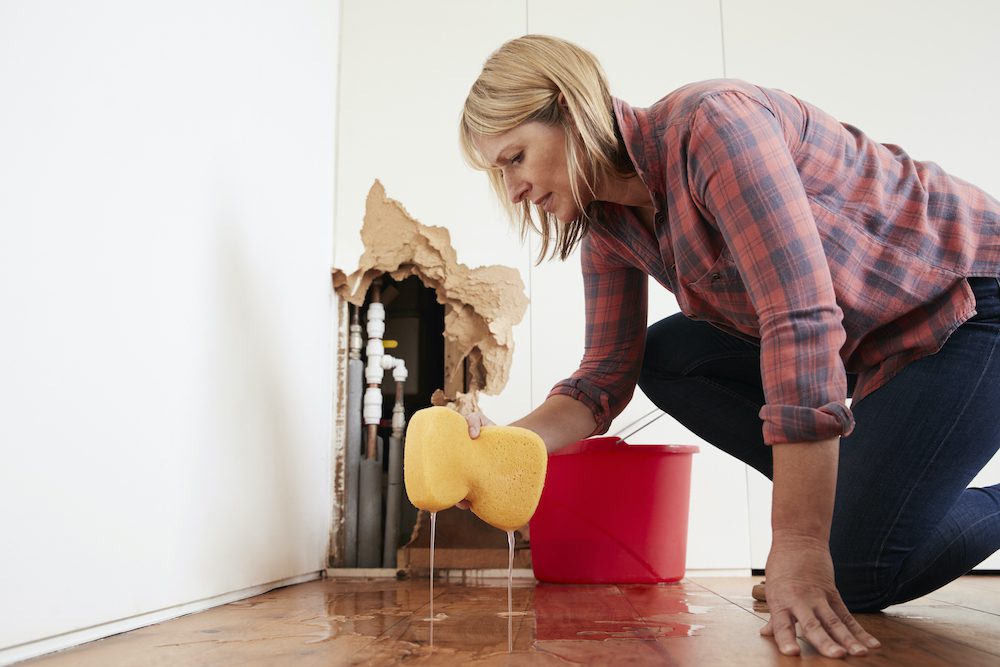Just how to Examine If Your Residence Has a Surprise Leakage
Just how to Examine If Your Residence Has a Surprise Leakage
Blog Article
The writer is making several good points about Hacks to detect leaks as a whole in the article underneath.

Early detection of leaking water lines can mitigate a prospective catastrophe. Some little water leaks may not be visible.
1. Check Out the Water Meter
Every home has a water meter. Inspecting it is a guaranteed manner in which aids you uncover leakages. For starters, switch off all the water resources. Make sure no one will purge, utilize the faucet, shower, run the cleaning maker or dishwashing machine. From there, go to the meter and watch if it will certainly change. Since no person is utilizing it, there should be no movements. That suggests a fast-moving leak if it moves. Likewise, if you discover no changes, wait an hour or 2 and examine back once more. This means you might have a slow-moving leakage that could even be below ground.
2. Inspect Water Intake
Evaluate your water costs and track your water usage. As the one paying it, you should discover if there are any kind of discrepancies. If you detect sudden changes, despite your usage coinciding, it suggests that you have leakages in your plumbing system. Bear in mind, your water costs must drop under the same array every month. An abrupt spike in your expense suggests a fast-moving leakage.
A constant rise every month, also with the exact same habits, reveals you have a slow-moving leak that's also slowly intensifying. Call a plumber to completely check your property, especially if you feel a cozy area on your flooring with piping underneath.
3. Do a Food Coloring Test
When it comes to water consumption, 30% comes from bathrooms. If the color somehow infiltrates your bowl throughout that time without flushing, there's a leakage in between the storage tank and bowl.
4. Asses Outside Lines
Don't neglect to check your outdoor water lines also. Must water permeate out of the link, you have a loose rubber gasket. One small leakage can squander heaps of water as well as spike your water bill.
5. Evaluate the situation and also inspect
Home owners should make it a habit to examine under the sink counters as well as even inside closets for any bad odor or mold growth. These two red flags indicate a leakage so punctual focus is required. Doing routine assessments, also bi-annually, can conserve you from a significant problem.
Examine for discolorations and compromising as many pipes as well as home appliances have a life expectations. If you suspect leaking water lines in your plumbing system, do not wait for it to rise.
Early detection of leaking water lines can alleviate a possible catastrophe. Some small water leaks may not be noticeable. Inspecting it is a surefire means that helps you uncover leaks. One little leakage can waste tons of water and also surge your water bill.
If you think leaking water lines in your plumbing system, don't wait for it to intensify.
WARNING SIGNS OF WATER LEAKAGE BEHIND THE WALL
PERSISTENT MUSTY ODORS
As water slowly drips from a leaky pipe inside the wall, flooring and sheetrock stay damp and develop an odor similar to wet cardboard. It generates a musty smell that can help you find hidden leaks.
MOLD IN UNUSUAL AREAS
Mold usually grows in wet areas like kitchens, baths and laundry rooms. If you spot the stuff on walls or baseboards in other rooms of the house, it’s a good indicator of undetected water leaks.
STAINS THAT GROW
When mold thrives around a leaky pipe, it sometimes takes hold on the inside surface of the affected wall. A growing stain on otherwise clean sheetrock is often your sign of a hidden plumbing problem.
PEELING OR BUBBLING WALLPAPER / PAINT
This clue is easy to miss in rooms that don’t get much use. When you see wallpaper separating along seams or paint bubbling or flaking off the wall, blame sheetrock that stays wet because of an undetected leak.
BUCKLED CEILINGS AND STAINED FLOORS
If ceilings or floors in bathrooms, kitchens or laundry areas develop structural problems, don’t rule out constant damp inside the walls. Wet sheetrock can affect adjacent framing, flooring and ceilings.
https://www.servicemasterbyzaba.com/blog/how-to-detect-water-leakage-in-walls/

As a serious reader on Top leak detection hacks, I was thinking sharing that excerpt was smart. I beg you take the opportunity to distribute this page if you enjoyed it. Thanks a lot for your time. Come back soon.
Report this page